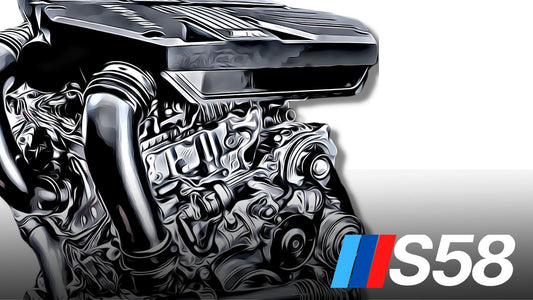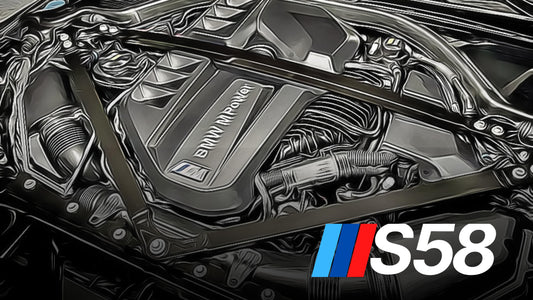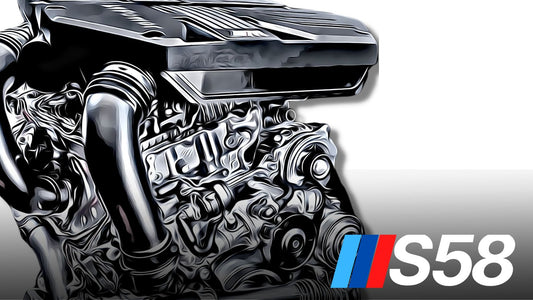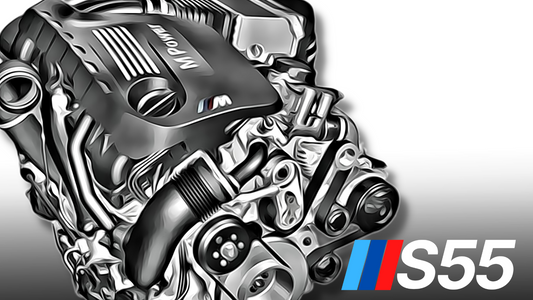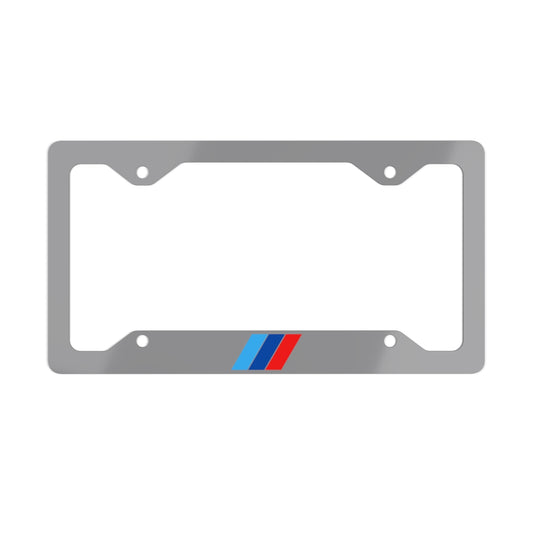BMW debuted its first V8 engine with two turbochargers in 2008. The N63 debuted on the E71 X6 and would later power several cars in the German automaker's lineup, from the performance-boosted S63, 5-Series, X7 and almost everything else.
BMW debuted its first V8 engine with two turbochargers in 2008. The N63 debuted on the E71 X6 and would later power several cars in the German automaker's lineup, from the 5-Series to the X7 and almost everything else, including the high-performance version released as the S63.
This N63 may not be a good fit for the casual car owner. Numerous dependability concerns were accompanied by its impressive performance. However, BMW has solved many of these issues with substantial improvements, and the BMW N63 engines now in production are far more dependable than those that came before.
We've listed all of the different engine variants, as well as what to look for if you intend to purchase a new or used engine.
BMW N63 Technology
- Production Run: 2008 – Present
- Cylinder Head Material: Aluminum-Silicon (Alusil)
- Cylinder Block Material: Aluminum-Silicon (Alusil)
- Configuration: V8
- Bore: 89mm
- Stroke: 88.3mm
- Valvetrain: DOHC with VVT Dual VANOS
- Displacement: 4.4 L
- Compression Ratio: 10:1
- Weight: 503 lbs.
- Max HP: 402hp
- Max Torque : 443 lb-ft
The N63 was the first V8 engine produced with a "hot-vee" design. This occurs when the turbocharger is positioned inside the "V" formed by the cylinders. This means that, unlike a traditional V-engine, the exhaust manifolds are between the cylinder banks and the intake manifolds are on the outside. The primary purpose for doing so is to enhance packing. A hot-vee architecture occupies much less space than a conventional turbocharger configuration.

Because the air has to travel less distance, the turbocharger can start working faster, and the cooling is better. Also, the N63's turbochargers were cooled by two air-to-water intercoolers, which made the car run better.
The rest of the engine was made just like other BMW engines from the same time. The N63 has a double overhead camshaft with 32 total valves, VANOS (variable valve timing), and direct injection. At first, BMW did not put its variable valve lift or Valvetronic technology into the N63. But it was added in 2012 when the engine got its first technological update, which we will talk about in more detail below.
Available Versions
If you're interested in purchasing one of the BMW N63's early models, you may have to contend with the vehicle's unreliability. However, BMW has made several improvements to the N63's construction over the last fourteen years, making it substantially more durable. So, what did these several revisions entail?
Technical Update for 2012
The first upgrade was implemented in 2012, and this engine version was designated N63B44O1 or N63TU, where "TU" stood for "technical update." As we noted before, this upgrade included Valvetronic. Other significant updates were:
- A redesigned cylinder head.
- Lighter pistons.
- A reworked VANOS system.
- A forged camshaft.
- Connecting rods.
- Modifications to the cooling system.
BMW also got rid of the drive-by-wire throttle body, which was no longer needed after Valvetronic was added, and put in a regular throttle body as a backup. A few other small changes were made, like installing new valve stem seals and reworking the fuel system to work with the new engine management system.
2016 Technical Update
The N63B44O2, or N63TU2, resulted from a 2016 technological improvement. Compared to the 2012 upgrade, modest mechanical modifications were made to enhance cooling and decrease weight.
Twin-scroll turbochargers were the most major modification. BMW also relocated the engine oil cooler into the 'V' and underneath the turbochargers. This streamlined the cooling process and let the firm eliminate one radiator. Last but not least, the pistons were altered to enable more oil to flow out to the pan, hence minimizing the amount drawn back into the combustion chamber.
2018 Technical Update
The BMW N63 got its most recent upgrade in 2018, which made the N63B44M3 and the N63B44T3 engine models. The 'M' was the medium output engine, while the 'T' was the 'highest' output model.
The N63B44M3 had a new ignition system and better heat protection around the cylinder head and crankcase. This engine also included an overboost function that temporarily added 34 horsepower when the vehicle was in launch mode.
Meanwhile, the N63B44T3 was outfitted with bigger injectors and twin-scroll turbochargers. BMW also reworked the intake manifold and modified the cooling system to fit the new turbos.
Which Cars Were Powered By The N63 Engine?
BMW produced a 4.0-liter version of the N63 (N63B40A) exclusively for the Chinese market. However, every N63 delivered in the United States was a 4.4L unit—4,395cc, to be exact.
N63B44O0
The N63B44O0 was the first N63. It was made from 2008 until the first "technical upgrade" came out in 2013. It was used in the following cars:
- 2008-2013 E71 X6 50i
- 2009-2012 F01/F02 750i
- 2010-2011 F07 550i GT
- 2011-2013 F10 550i
- 2011-2013 E70 X5 50i 2012 F12 650i
The engine's peak output was 402 horsepower at 5,500–6,400 rpm and 443 lb-ft of torque at 1,750–4,400 rpm, making it the least powerful variant.
N63B44O1 (N63TU)
From 2013 until 2016, the N63B44O1 was manufactured, delivering 444 horsepower at 5,500–6,000 rpm and 479 lb-ft of torque at 2,000–4,500 rpm.
- 2013-2015 F01/F02 750i
- 2013-2016 F07 550i GT
- 2014-2016 F10 550i
- 2014-2018 F15 X5 50i
- 2014-2019 F16 X6 50i
- 2013-2018 F12/F13 650i
- 2013-2019 F06 650i GC
N63B44O2 (N63TU2)
As mentioned previously, the mechanical changes in the second update were not very big, and they did not lead to a big increase in output. While peak horsepower and torque remained the same, torque was now accessible at 200 rpm earlier in the rev range.
- 2016-2019 G12 750i
- 2017-2020 G30 M550i
N63B44M3 (N63TU3)
Lower-grade TU3 engines generated 340 kW (456 horsepower) at 5,250–6,000 rpm and 479 lb-ft of torque at 1,500–4,750 rpm. The engine is still manufactured and offered on the following vehicles:
- 2018-present G05 X5 xDrive50i
- 2018-present G07 X7 xDrive50i N63B44T3 (N63TU3)
The N63B44T3 is the most powerful variant of the N63, generating 523 horsepower at 5,500–6,000 rpm and 553 lb-ft of torque at 1,800–4,800 rpm.
It now powers numerous BMW vehicles, including:
- 2018-present G14/G15/G16 M850i xDrive
- 2019-present G11/G12 750i/750Li sDrive/xDrive
- 2020-present G30/G31 M550i xDrive
- 2020-present G05 X5 M50i
- 2020-present G06 X6 M50i 2020-present G07 X7 M50i
What Is The Max Horse Power (HP) of the BMW N63?
With some relatively simple modifications, like a bigger turbo and better feeding, the N63 may generate over 600 horsepower at the wheels. Some tuners have reported dyno runs with over 700 horsepower, and this number will certainly become more prevalent as more people experiment with the platform.
Even in its standard configuration, the BMW N63 engine is a giant, and tuners have done dyno tests where the turbo could take 25 psi of boost. Notably, even earlier versions of the engine have a great deal of tuning potential, and for only a few thousand dollars worth of improvements, you can get over 100 horsepower.
N63/N63R/N63TU JB4 Tuner
How Reliable Is The BMW N63?
The current production of N63 engines is very dependable. The same cannot be stated for earlier engine versions. Here are some typical issues you may experience with an N63:
Battery Drain
In order to save more gas, BMW put a device on the N63 that turns off the power to the alternator. In contrast to standard automobiles, where the battery is charged by the rotation of the belts during normal driving, the N63's battery can only be recharged when coasting, with the foot off the pedal and not on the brake. This plan was obviously a waste of time since very few BMW N63 drivers would be coasting.
BMW attempted to resolve the issue by providing their vehicles with a bigger battery. But this did not solve the problem's root cause, which owners still have to deal with today. As a consequence, the manufacturer has reduced the recommended oil service frequency from 15,000 miles to 10,000 miles and also includes a battery replacement with the service.
Excess Oil Consumption
Since oil is also used to lubricate and cool the turbos, turbocharged engines often use more oil than engines that don't have turbos. However, the N63 uses an abnormal quantity of engine oil. There are many reasons why people are using more oil, which makes it a hard problem to solve.
Failure of the turbocharger oil seals, piston rings crankcase vent hose leaks, or a fractured valve stem seal are a few of the documented reasons of excessive oil consumption. A common BMW engine, like the N55 series, might use about a quart of oil every 1,000 kilometers. Some owners stated that their N63 used the same amount of fuel in almost half the distance!
BMW made new valve guides with tighter clearances and gave current owners free replacements to try to fix this problem. However, this is a labor-intensive procedure that takes skilled professionals around 12 hours to execute.
Timing Chain
The N63 has two timing chains, one for each bank of cylinders. On the original, they were susceptible to stretching. A stretched timing chain may lead to additional valve train difficulties and major performance losses. Typically, a timing chain generally last at 100,000 miles before replacement is required, however, owners of older N63-powered vehicles reported engine sounds and diminished performance considerably sooner.
BMW identified the issue and replaced the faulty item (along with associated components such as timing chain guides and tensioners) on affected vehicles.
Fuel Injector Failure
There have been instances of fuel injection systems malfunctioning on relatively recent engines. The issue for some owners have reported 20,000 miles. If you are purchasing a used N63, BMW's diagnostics team at the service facility should inspect it. They should assess the condition of the fuel injectors and inform you whether any (or all) must be replaced. Each new injector will cost several hundred dollars, so it is worthwhile to have them inspected.
A defective fuel injector can impair the performance, result in inappropriate idling, and will likely cause the Check Engine light to illuminate on the dashboard.
Leaking Valve Stem Seals
The valve stem seals were one of the most frequent difficulties. The BMW N63 is a hefty piece of machinery, and bigger engines often generate more heat. These elevated temperatures led the valve stem seals to degrade more rapidly than typical.
If this is the case, you can expect huge clouds of white smoke and more oil use. The stem seals themselves are quite cheap, but they are difficult to get and require significant effort that will certainly cost more than the item itself.
Water Pump Problems
When the engine is off, the BMW N63's electronic auxiliary water pump manages the coolant supply to the turbochargers. In the original engine design, this water pump would sometimes split, allowing coolant to flow over the electronics. Clearly, this may have catastrophic repercussions.
On more recent engine models, the water pump might sometimes get clogged. BMW will do one of two things: replace the pump or the turbocharger, depending on the number of times your car has had the problem.
N63 Summary
While BMW's smaller inline-4 and inline-6 engines have undergone significant alterations over the last decade, the BMW N63 has remained mostly untouched. Given the arrival of electric cars and BMW's greater emphasis on more eco-friendly powertrains, it seems improbable that the company would produce another V8 engine. Thus, the N63 may be the last of its type produced by the Bavarians.
Think about how reliable it is, but now is as good a time as any to buy one because the Customer Care Package covers older models and the newest N63s are much more reliable from the factory. However, since the engine is still in production, pricing for even pre-owned models may be rather high; if you want to save money, you may be better off waiting a few of years.







